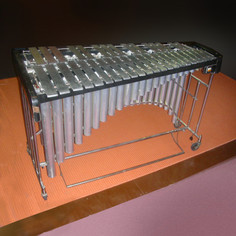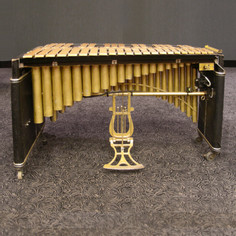I don’t think real drums — in musical situations were real drums are required, that is — are in any immediate danger of being moved aside by virtual ones.
While there’s lots of good uses for virtual drums, and while these virtual ones, if programmed well, can be reasonably convincing (provided the drumpart isn’t too complicated), there’s still plenty about a real acoustic kit that remains completely unsampleable and unmodelable. Just as it is with a piano and most any other acoustic instrument. It’s that beautiful, incredibly complex, totally unpredictable, a-mathematical yet gorgeously balanced, organic and pleasing musical chaos of real instruments that’s still such a loooooooooong way removed from being captured in its entirety and convincingly in algorithms and/or samples.
In the case of drums, you can sample or model every single component in the finest possible detail (with any number of trigger zones you care to include), you may even sample or model infinite variations of bleed and resonances, and you’ll still end up with a kit that, in that peculiarly frustrating way that is so typical of all virtual instruments, just doesn’t ring true.
Simple example: even if you could model a single ride cymbal hit to perfection, that would still be a completely unconvincing and quite useless sound in a drumpart that has ride cymbal going on, because consecutive hits on a ride generate many additional layers of sound and shimmer that just aren’t present in the single hits. (This phenomenon is particularly noticeable in jazz ride playing, which also explains, in part anyway, why jazz drum playing is especially difficult to simulate decently with samples). And the same, or similar, considerations apply to all components of a drumkit and are multiplied in unfathomable numbers when considering the kit as a whole.
Not to mention the obstacle that, apart from the fact that a drumkit consists of several profoundly different instruments — each of which would require a modeling engine that’s much more powerful than the current Pianoteq or Organteq engines (consider the timbral and dynamic complexities of just the hi-hat) —, equally important is the interaction between these instruments AND the interaction with the space around them.
(The above TD50KV clip, for example, sounds utterly unrealistic to my ears. Again, I’m not suggesting there’s no musical use for this type of drums, but as an attempted illusion of a real kit, this sounds pretty ridiculous, I find. And I *am* a V-Drums fan.)
All this to say: despite the modeling genius of Modartt (and some other companies), I really don’t see truly convincing modeled drums becoming a reality any time soon. But that doesn’t mean I wouldn’t fully support and encourage an intrepid initiative in that direction.
_
Last edited by Piet De Ridder (18-03-2020 13:45)


